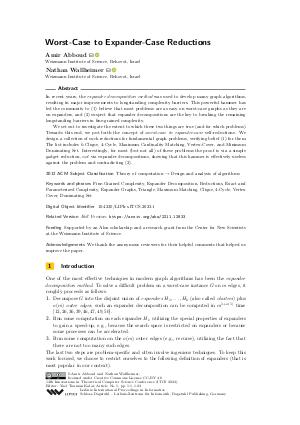LIPIcs.ITCS.2023.1.pdf
- Filesize: 0.85 MB
- 23 pages

 Creative Commons Attribution 4.0 International license
Creative Commons Attribution 4.0 International license



























Feedback for Dagstuhl Publishing